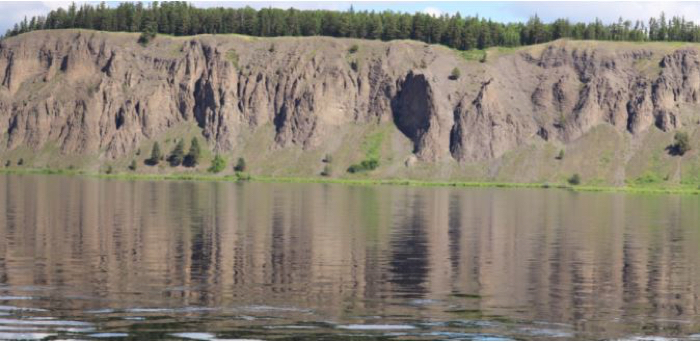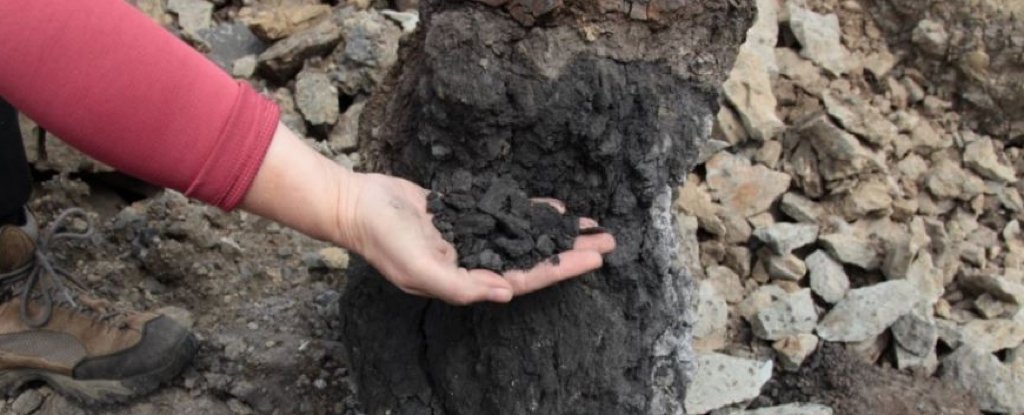Products You May Like
The most severe extinction in Earth’s history looks to have been preceded and enabled by a colossal coal fire lit by volcanism over 250 million years ago, according to new research.
The Permian-Triassic extinction, also known as the ‘Great Dying’, constitutes the deadliest of all our planet’s mass extinction events. When it took place, approximately 252 million years ago, an estimated 96 percent of marine species were wiped out, alongside 70 percent of terrestrial vertebrates.
What could cause such a sweeping die-off across so many of Earth’s creatures? The chief culprit is a giant volcanic event that occurred in the lead-up to the Great Dying; it produced a gargantuan region of volcanic rock in Russia called the Siberian Traps.
This formation – an example of a large igneous province – was the result of a series of ancient eruptions that unleashed magma for about 2 million years, completely redrawing the local landscape, much as it recast the fates of most animals in existence at the time.
Exactly how the eruptions caused the extinctions remains unknown, with scientists proposing numerous mechanisms that could have been involved: rising temperatures due to greenhouse gases, thinning ozone levels, volatile chemicals produced by the eruption, and even microbial adaptations.
Of course, many of these hypothetical causes do not contradict one another, and could have acted in tandem to help produce this unprecedentedly deadly event. Now, scientists have found evidence for another piece of the puzzle, and it’s one that draws a grim parallel with Earth’s situation today.
 A cliff of volcaniclastic rock by the Angara River. (Scott Simper)
A cliff of volcaniclastic rock by the Angara River. (Scott Simper)
It’s long been reasoned that the global warming that coincided with the Permian-Triassic extinction would have involved the combustion of coal, carbonates, and organic-rich shales, producing significant levels of heat-trapping carbon dioxide (CO2) and methane (CH4) in the atmosphere. But finding direct evidence for the chemical ingredients has been harder to come by.
“The magnitude, tempo, and origin of carbon emissions during Siberian Traps magmatism have remained in question despite their critical atmospheric importance,” explain the authors of a new study, led by planetary scientist Lindy Elkins-Tanton from Arizona State University.
Over the course of six years’ worth of field expeditions to the Siberian Traps region, Elkins-Tanton and her team identified and collected over a thousand pounds (450 kg) of volcaniclastic rocks dating back to the ancient eruption, sourcing them in forests, towns, and a particularly rich crop along the banks of Siberia’s Angara River.
“We found towering river cliffs of nothing but volcaniclastics, lining the river for hundreds of miles,” Elkins-Tanton explains. “It was geologically astounding.”
When the samples were analysed, the team discovered tiny fragments of burnt wood and burnt coal embedded inside the rock formations, along with pieces of charcoal and other organic matter. These fragments, the team says, amount to the first direct evidence of coal and vegetation being burned by magma flows in the ancient eruption.
“The observations presented here are interpreted as evidence that coal and organic-matter combustion, along with forest fires, occurred in response to volcanism,” the researchers write.
“Moreover, we infer that these interactions were widespread, based on the presence of thermally altered and/or burnt coal and organics in volcaniclastic rocks spanning the southern and central Siberian Traps province.”
The team concludes that the volume and composition of organic matter interacting with magmas as evidenced here could have “significantly driven” the Permian-Triassic extinction.
That may be speculative, but it lines up rather neatly with what we’re seeing today. Some 250 million years later, the world is again rampantly – and this time, deliberately – burning coal, heedlessly inviting another devastating climate change for the planet.
The findings are reported in Geology.
